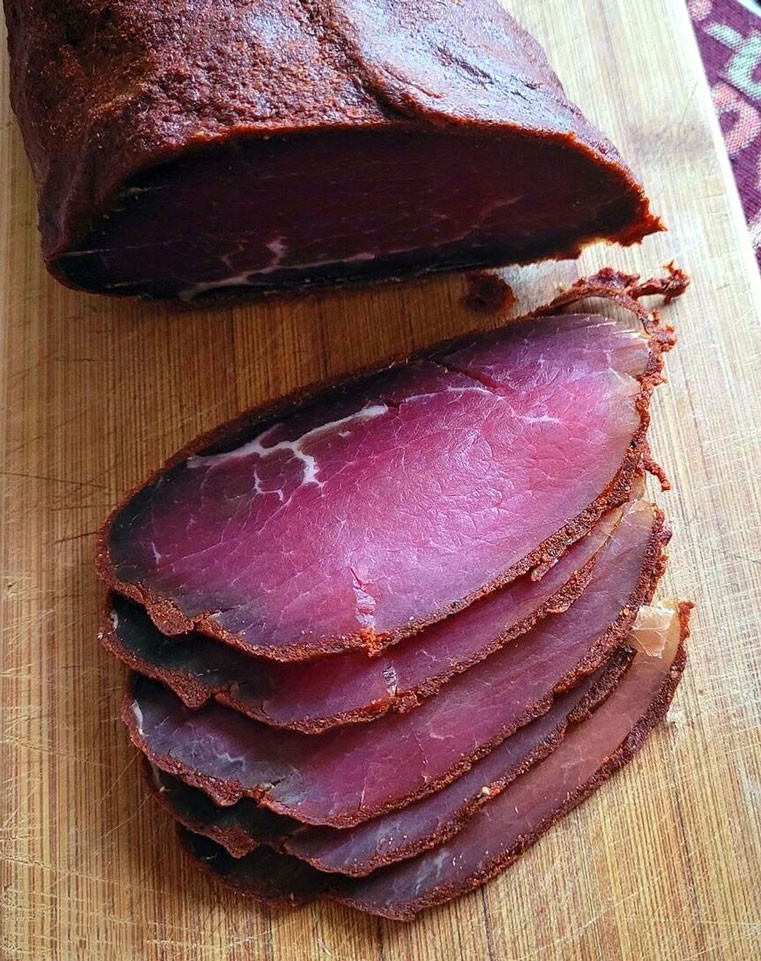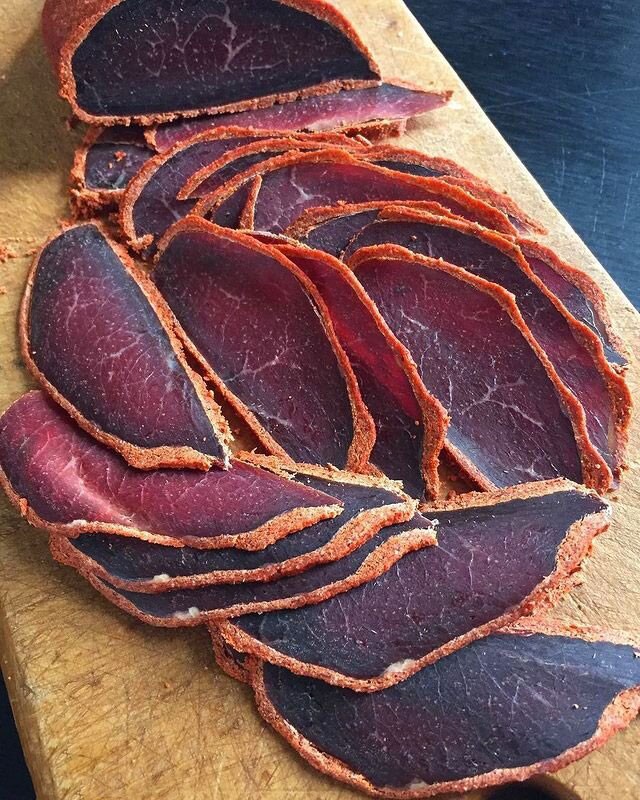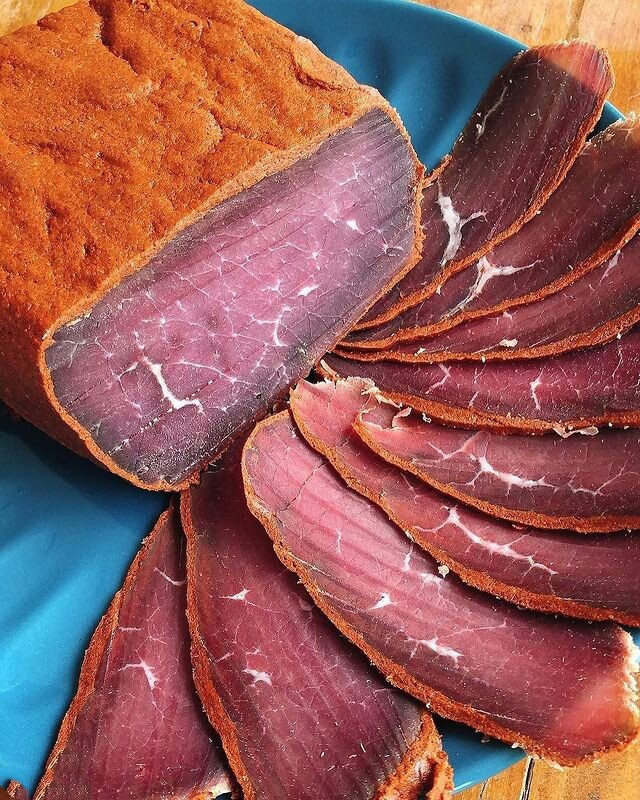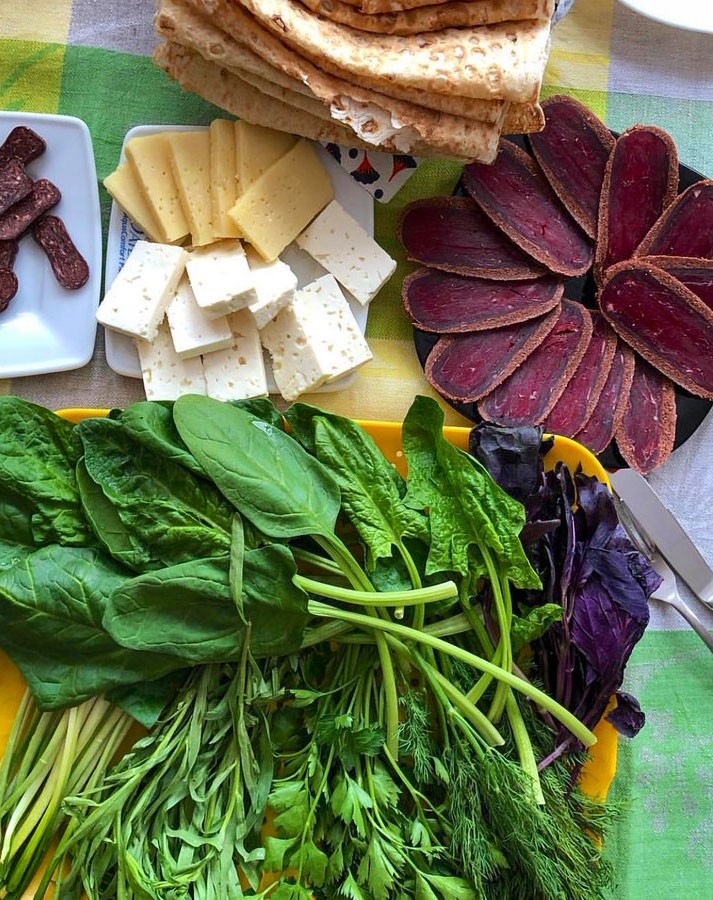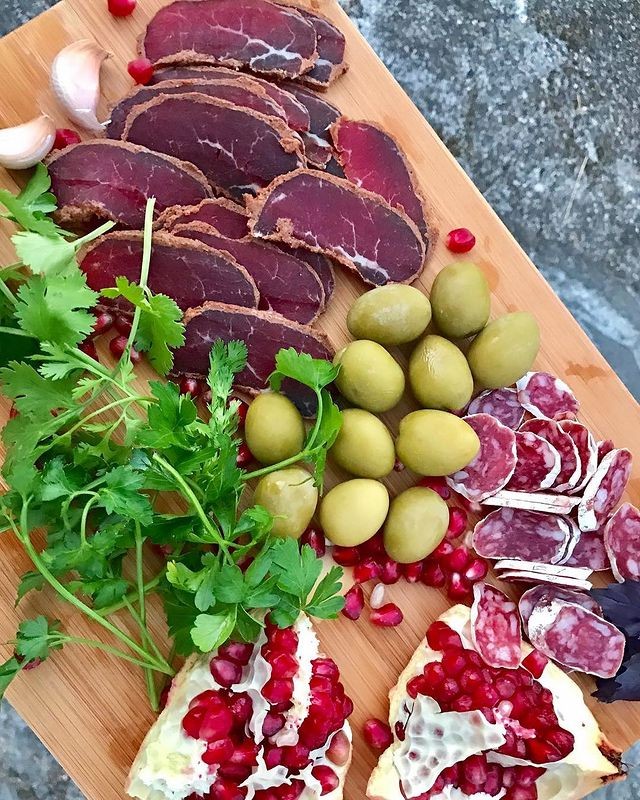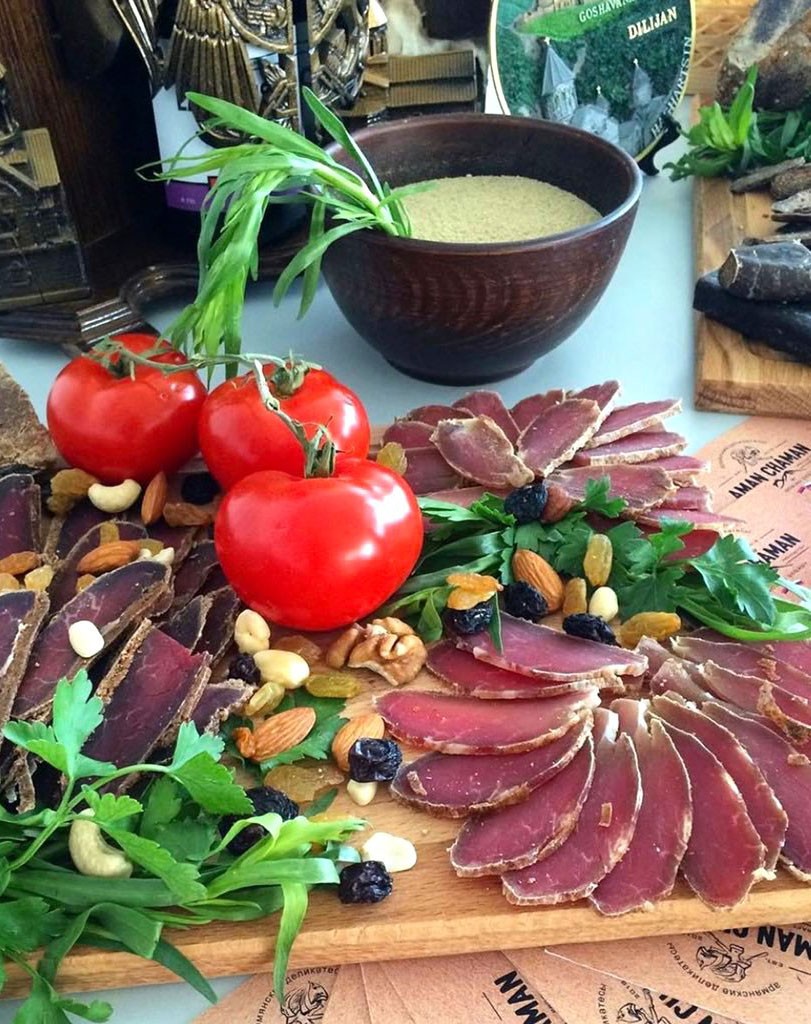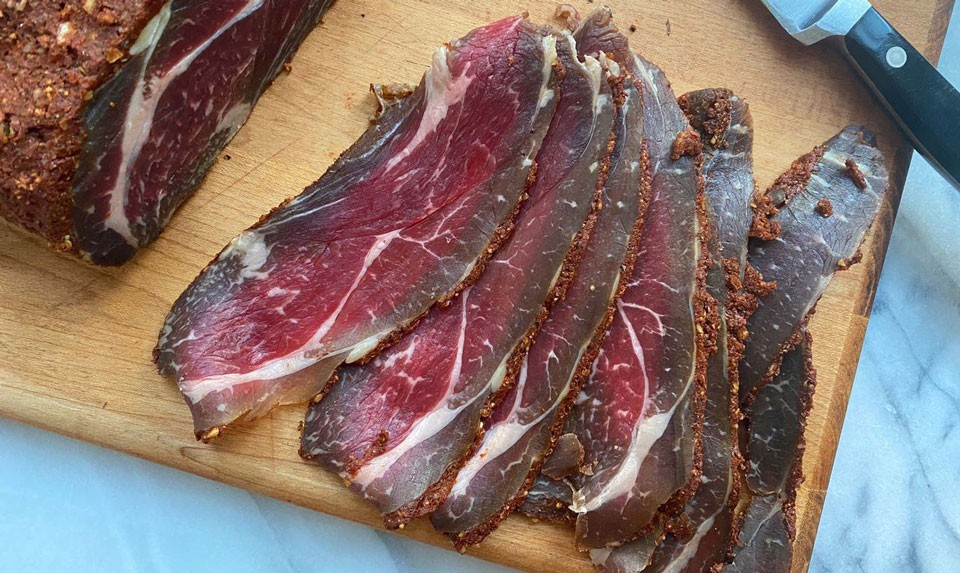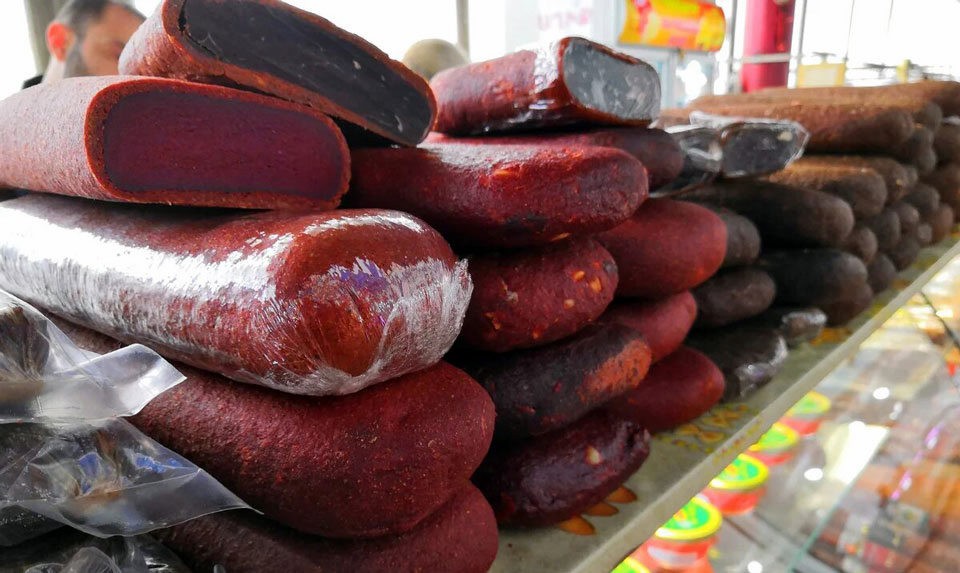Armenian Basturma
Armenian Basturma is highly seasoned, air-dried raw beef, flavored with garlic and 'chaman' paste (the mix of pungent spices that’s heavy on fenugreek and paprika). Basturma is beloved to Armenians, and is to Armenia what bresaola is to Italy and cecina is to Spain.
Historically, the Armenian residents of Karin in Western Armenia (modern name Erzurum, Turkey) were known to be most proficient in the making of this venerated delicacy.
The first recorded mention of Basturma was between 95-45 BC in Armenia during the reign of Tigranes the Great. It is believed that the technology of air-drying meats was first developed to preserve Basturma being traded from Armenia to China and India.
During the Byzantine period, it was called "apokt". One story gives its origins as the city of Caesarea in Western Armenia (modern Kayseri, Turkey), where there was a Byzantine dish called "pastón", which would be translated as "salted meat" and was apparently eaten both raw and cooked in stews.
It is said, that "pastón" technique to have been perfected by Armenians in Late Antiquity. Armenians were known throughout the Levant as the most skilled makers of Basturma, and in Caesarea (Kayseri), the production of Basturma was entirely run by Armenians. In fact, basturma-making was such a popular vocation among medieval Armenians that Basturmajian (“basturma maker”) became a family name that’s still in use today.
Basturma is prepared by salting the meat, then washing it with water and letting it dry for ten to 15 days. After that the blood and salt is squeezed out of the meat which is then covered with a paste called 'chaman', prepared with crushed cumin, fenugreek, garlic, and hot paprika, followed by thorough air-drying. The traditional Armenian Basturma strictly uses beef as the meat and this remains as the most common usage.
So, what defines a perfect Basturma? Experts will tell you that the meat’s center must be deep red, a sign of freshness and expert curing. On the exterior, the spice coating, or 'chaman', should be fresh and fragrant on the nose and packed on generously. Most importantly, the meat must be stiff all the way through with a low moisture content, which translates to a long shelf life.
In Armenia, Basturma is usually served as a meze in thin slices, and sometimes added to scrambled eggs for breakfast. You can enjoy Basturma-topped pizza served in many Armenian-owned pizzerias in the Baltic capitals, in Yerevan, Los Angeles, or Boston.
Basturma sandwiches are also common in many cities around the world. And you can find it as a whole or sliced in Armenian-owned grocery stores in Buenos Aires, Montevideo, Sidney, Tehran, Moscow, and far beyond. In fact, it can even be ordered as a block in a vacuumed-sealed plastic bag from Amazon.com!
To learn more about Armenia's food & drink, please visit our ARMENIAN CUISINE page
